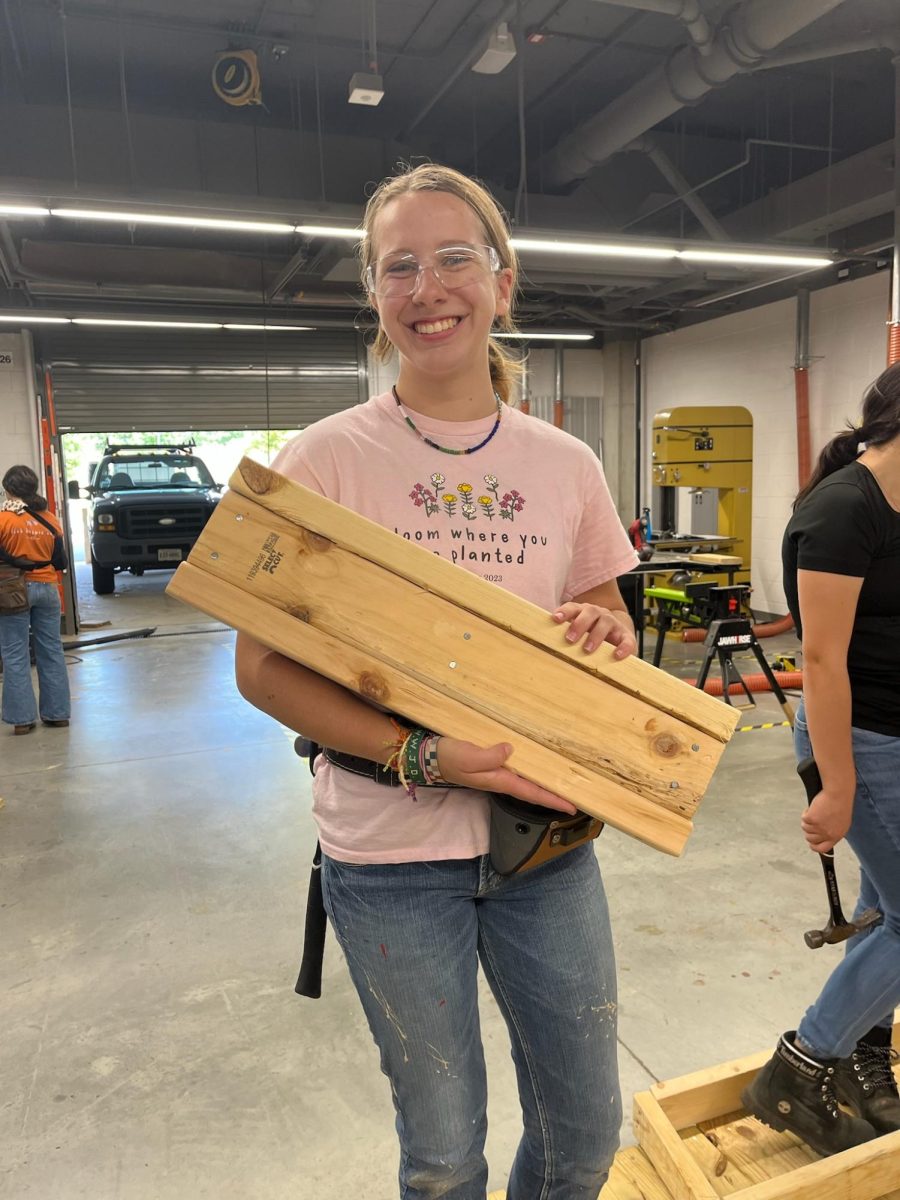By Danielle Matta
What weighs 20 pounds? Well, lots of things—a young toddler, a tire, certain cats and small dogs, 2 gallons of water, four textbooks…and surprisingly enough, a high school backpack.
A study conducted by Consumer Reports magazine in 2009 showed that some New York City students were carrying backpacks weighing an average of 18.4 pounds by the 6th grade. Five years later, this figure is sure to have worsened, what with curriculums becoming more strenuous each year and an increase in course load difficulty as a student gets older. By senior year, it’s not so hard to ascertain the reason for slumped backs and slouched shoulders.
Evidence of this can be seen in Tuscarora students as well, with 69% out of 42 surveyed finding themselves in physical pain as a result of carrying their backpack, and 21% determining this pain to be sometimes severe.
“Even when [the backpack is] off, it still hurts,” said senior Hannah Smith, who can carry her bag “maybe about fifteen or twenty minutes” before it begins to bother her. “My back is constantly in pain,” she said.
What’s truly disturbing is that while experts suggest backpacks should weigh about 10% of a student’s body weight, most exceed that. In fact, of 22 randomly selected Tuscarora students, 45% had a backpack that exceeded 15 pounds, the highest being almost 24 lbs. For most teenagers weighing close to the national average (about 138 pounds for girls and 166 pounds for boys, according to the Anthropometric Data Reference for the U.S.), a 20 lb backpack is about 12-14% of their body weight, which is not taking into account an individual teenager’s height, strength, or health conditions, which can also affect back health.
Beyond that, it matters how the student is carrying the backpack, and for how long. It goes without saying that you’re causing more problems for your back by carrying your bag only on one shoulder, but carrying the full weight of the backpack all day, every day, has potential to cause long-lasting damage as well.
The most obvious and immediate result is back pain, but the symptoms don’t stop there. “Fatigue, numbness, a tingling in the arms, pain in the low back, and muscle cramping. Those are the indicators early on that you’re consistently carrying too much weight,” said school nurse Ms. Catherine Lunsford.
A more serious, gradual result of carrying a heavy backpack is bad posture. Often a position contributing to bad posture is forward head posture (FHP), when one’s head is pushed out instead of aligned with the neck, and can cause the entire spine to be out of alignment. In worse cases, FHP can lead to early arthritis, but for most, it strains the neck muscles and pinches nerves, according to the Mayo Clinic Health Letter and other spinal research studies. The main issue is that heavy weight leads to a deterioration of spine health, which is the last part of your body you want to abuse during youth.
“The back is the trunk of the tree of the body,” said Nurse Lunsford. “If you have issues with your back, you have issues with your legs, your shoulders, your knees…it can go up to your neck. Basically it’s the nervous system for the body. So there’s a potential to damage other systems as a result of not taking care of your back.”
If carrying a heavy backpack all day is so destructive to the student’s body, and most students are carrying bags that exceed the recommended weight, what can be done to prevent spinal injuries and back pain?
The most simple solution: Use your locker.
“We find that at locker clean-out at the end of the year, [some students] never once used their locker. That means that they’re carrying everything around with them every day,” said Nurse Lunsford. It seems that the minority of students frequently use their locker—of 42 surveyed, 67% of students have yet to use their locker this year.
Sophomore Alyanna Torres is one of the many who chooses not to use her locker, due to its inconvenient location in relation to her classes. “If it was in a better place, I would use it,” she said. Other students feel that if there was more time between classes, they would be able to use their locker and still get to class on time.
There are other options, though. Students have a plethora of ideas, from simply just carrying less,to having extra copies of textbooks in classrooms or more technologically savvy resolutions, like more online work and textbooks on tablets.
“Honestly I think it’s up to the student,” said Smith. “I think the teachers and the staff can help, by allowing us to keep certain supplies in the classroom. But ultimately it’s up to the student’s management.”
When you’re young you hardly think about what you do today and how it will affect you as an adult. The fact of the matter is, however, that negligence of the bodies’ signals now can very well come back to bite you in the future. If the students’ backs are in pain during their youth — well, they aren’t getting any younger.





